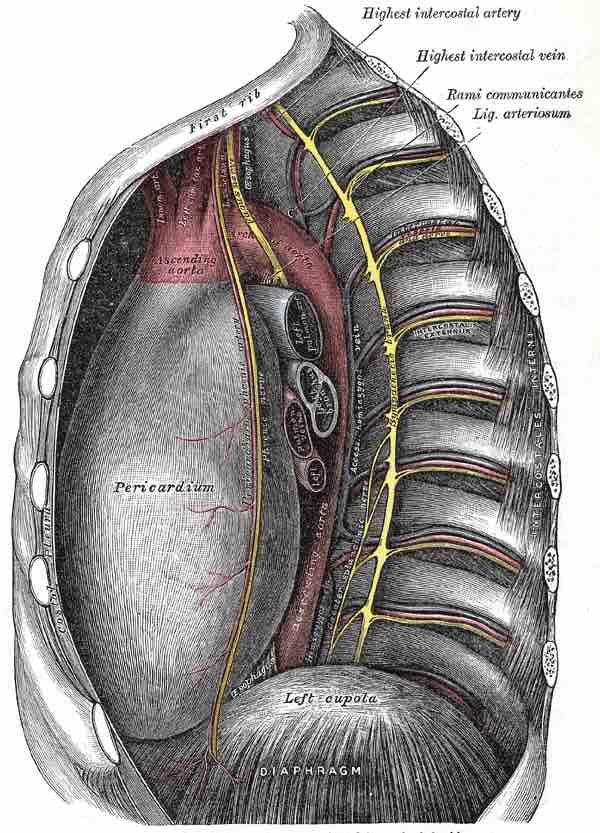The thoracic aorta forms part of the descending aorta and is continuous with the aortic arch at its origin before becoming the abdominal aorta. Contained within the posterior mediastinal cavity, it begins at the lower border of the fourth thoracic vertebra where it is continuous with the aortic arch, and ends in front of the lower border of the twelfth thoracic vertebra at the aortic hiatus in the diaphragm. At its commencement, the thoracic aorta is situated on the left of the vertebral column; it approaches the median line as it descends, and at its termination lies directly in front of the column.

Thoracic aorta
The aorta, highlighted in red, includes the thoracic aorta, the section of the aorta which runs from the lower border of the fourth thoracic vertebra to the diaphragm.
The thoracic aorta's relation, from above downward, is as follows: anteriorly with the root of the left lung, the pericardium, the esophagus and the diaphragm; posteriorly with the vertebral column; on the right side with the hemiazygos veins and thoracic duct; and on the left side with the left pleura and lung. The esophagus lies on the right side of the aorta for most of its length, but at the lower part of the thorax is placed in front of the aorta and close to the diaphragm, situated on its left side.
As it descends in the thorax, the aorta gives off several paired branches. In descending order these are the bronchial arteries, the mediastinal arteries, the esophageal arteries, the pericardial arteries, and the superior phrenic artery. The posterior intercostal arteries are branches that originate throughout the length of the posterior aspect of the thoracic aorta.